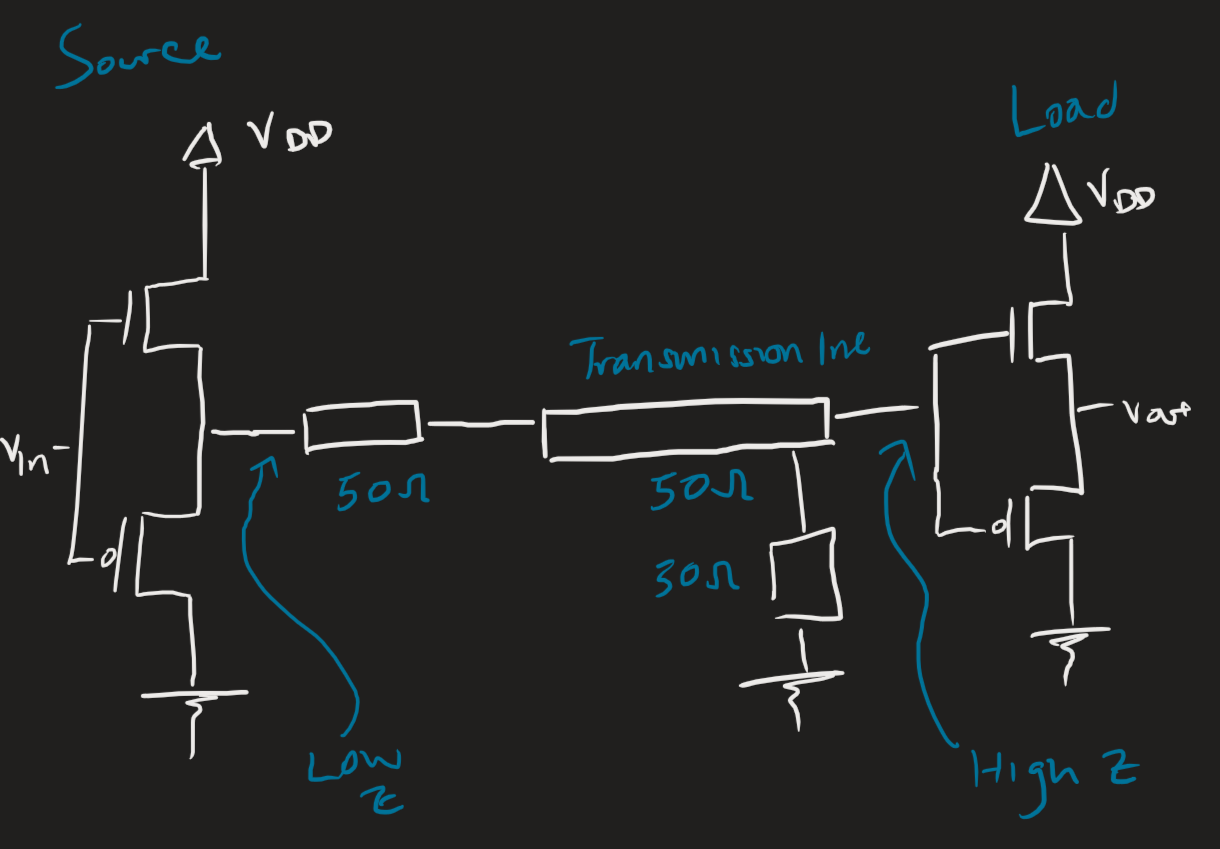Noise is an unwanted addition to signals, especially in analogue time-varying signals.
As Prof Najm says, “your signal to noise ratio can only go down”.
Digital design
We have two big signal integrity problems: one is the need for impedance matching when a trace is long, and the other is crosstalk between traces.
Impedance matching (also termination) sets all portions of an interconnect (source buffers, trace, load buffers) to the same impedance. This may be necessary when a trace is very long.1 The gist of it is that the signal transition is so fast that the signal only interacts with the trace during its transitions.
 For SPI or I2C, termination needs to be applied manually in ECAD tools, but only where the traces are very long.
For SPI or I2C, termination needs to be applied manually in ECAD tools, but only where the traces are very long.
When a signal changes, this can induce noise in a nearby trace, called inductive coupling, dominating at low frequencies. Capacitive coupling is caused by a changing electric field, dominating at high frequencies. The faster the rising edge, the larger the amplitude of the noise signal. We can reduce or eliminate crosstalk by:
- Small series resistor on output of signal source to slow down the rise time.
- If traces are routed on adjacent layers, only route them in perpendicular directions.
- Crosstalk depends on the w/h ratio. Route over a ground plane and use a higher w/h ratio (increase w, decrease h, or both).
Footnotes
-
From Altium’s introductory course. ↩